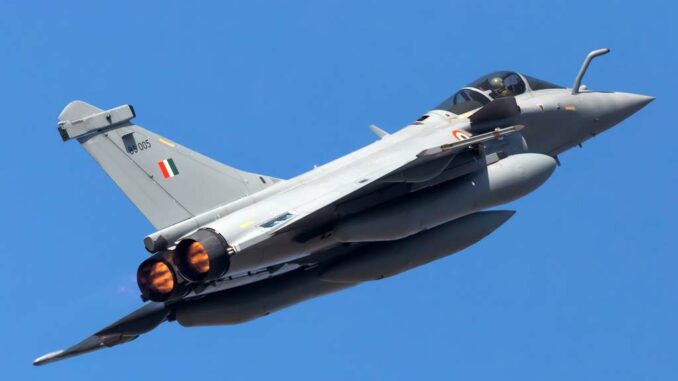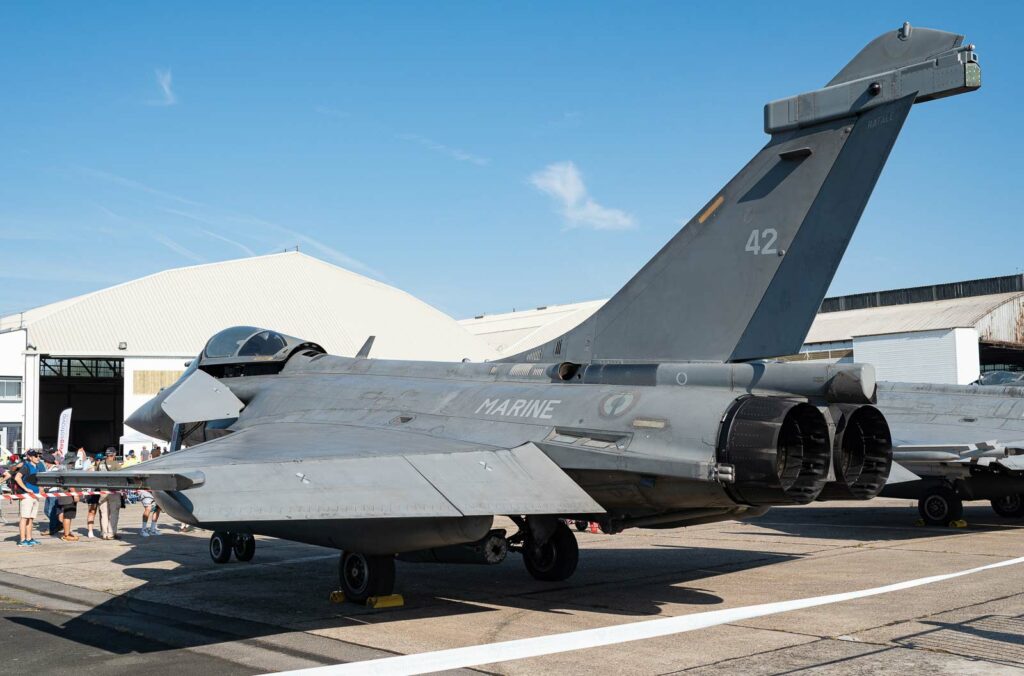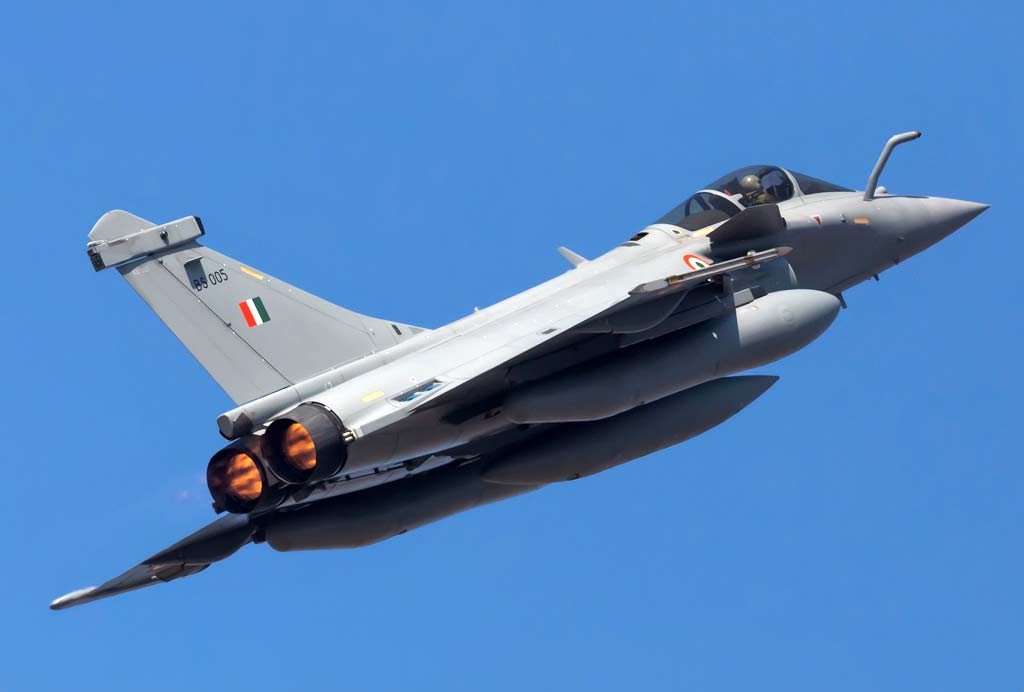
The Dassault Rafale, the versatile French fighter, has for years been one of the jewels in the crown of the global aerospace industry. Designed to be agile, fast and powerful, it represents the perfect balance between speed, maneuverability and firepower. In this article, we explore the Rafale’s speed and the factors that set it apart.
History and design of the Dassault Rafale
Genesis of the Rafale project:
Launched in the 1980s, the Rafale program aimed to replace all the French Air Force’s fighter jets with a multi-purpose model capable of meeting growing needs in terms of speed and technology.
Speed-related design objectives:
From the outset, speed was a decisive criterion. The Rafale had to be capable of exceeding Mach 2 while remaining stable, a considerable challenge given the competing demands for maneuverability and payload.

Technical characteristics influencing speed
Engines :
The Rafale is powered by two M88 engines from Safran Aircraft Engines. These turbofan engines, designed specifically for the Rafale, combine power and efficiency, enabling rapid acceleration and a top speed in excess of Mach 2.
Aircraft aerodynamics:
Thanks to its “canard-delta” design, the Rafale benefits from excellent maneuverability without compromising speed. The canard planes, located at the front, improve control, enabling tight maneuvers at high speeds.
Materials used :
Extensive use of composites, aluminum alloys and titanium, reduces the aircraft’s weight while maintaining its robustness. This relative lightness contributes greatly to its speed performance.
Speed performance: figures and comparisons
Maximum speed of the Rafale :
The Rafale can comfortably reach and operate at speeds in excess of Mach 2, i.e. over 2,414 km/h.
Comparison with other aircraft :
Compared with other modern fighter aircraft such as the Eurofighter Typhoon or the F-22 Raptor, the Rafale stands out not only for its speed, but also for its agility at these high speeds.
The Dassault Rafale:
Maximum speed: Over Mach 2, or more than 2,414 km/h.
Operational ceiling: Approximately 15,235 meters.
Range: 3,700 km with three fuel tanks.
Features: Its “canard-delta” design makes it particularly agile, especially during high-speed maneuvers.
Eurofighter Typhoon:
Maximum speed: Approximately Mach 2, or nearly 2,495 km/h.
Operating ceiling: Over 19,810 meters.
Range: 2,900 km without refueling.
Features: This aircraft is designed for air superiority, with great agility, especially at high altitude.
The F-22 Raptor:
Maximum speed: Mach 2.25, or around 2,414 km/h. However, it should be noted that the F-22 can fly at supersonic speeds without afterburner, a feature known as “supercruise”.
Operating ceiling: over 20,000 meters.
Range: 2,960 km without refueling.
Features: Widely regarded as the most advanced fifth-generation fighter, with exceptional stealth, supercruise capability and maneuverability.
Although the Rafale’s speed is comparable to that of the Eurofighter Typhoon and F-22 Raptor, each aircraft offers unique advantages. The Eurofighter excels at altitude, the F-22 has supercruise capability and superior stealth, and the Rafale stands out for its versatility and agility, not least thanks to its “canard-delta” design.
Records and achievements of the Dassault Rafale :
The Dassault Rafale is one of the most recognized fighters of its generation, not only for its versatility, but also for the exceptional performance it has demonstrated on a variety of occasions, both domestically and internationally.
High-speed operations over long distances:
Exercise “Garuda”: During the Franco-Indian exercise “Garuda” in 2019, French Rafales demonstrated their ability to cover long distances at high speeds. The aircraft flew from France to the Mont-de-Marsan air base in India, covering a distance of around 7,000 km in just a few hours with in-flight refueling. This rapid deployment underlined not only the aircraft’s speed, but also its endurance and ability to carry out operations over long distances.
Operation Harmattan: During the military intervention in Libya in 2011, the Rafale carried out deep strikes into enemy territory, flying long distances from their home bases in France or the Mediterranean. These missions often required high-speed flights to reach target areas quickly, while avoiding enemy threats.
Reactivity to alerts:
French Air Force Rafales on alert have repeatedly demonstrated their ability to take off within minutes to intercept unidentified aircraft approaching French airspace. These intercepts are often carried out at high speeds to reach the target aircraft quickly.
High-speed maneuvers at air shows:
At various airshows, such as the Paris Air Show or the Royal International Air Tattoo, Rafales have impressed spectators with their high-speed acrobatic maneuvers. These maneuvers often include tight turns, rapid climbs and swooping descents, demonstrating the aircraft’s agility at high speeds.
Supercruise capability:
Although the Rafale doesn’t achieve supercruise as noticeably as the F-22 Raptor, it still has the ability to fly at supersonic speeds without afterburner for short periods. It’s a feature that enables the aircraft to maintain high speeds while saving fuel.
Multinational exercises:
In exercises such as “Red Flag” in the USA, the Rafale demonstrated its speed and agility against other fighter aircraft from different countries. These exercises compare the Rafale’s capabilities with those of other modern aircraft in realistic combat scenarios.
The Dassault Rafale is not only recognized for its technical capabilities on paper, but has repeatedly proven its superior performance in real-world operations, exercises and demonstrations. Its ability to maintain high speeds over long distances, and its maneuverability at these speeds, make it one of the most respected fighter aircraft of its generation.

Operational implications of the Rafale’s speed
Advantages in air combat:
Speed is crucial for intercepting enemy aircraft, evading ground-to-air threats, and the ability to rapidly engage and disengage combat.
Reconnaissance and ground strike missions:
In addition to aerial combat, the Rafale’s speed enables it to penetrate enemy defenses, carry out rapid reconnaissance missions and strike ground targets with precision.
Joint missions:
Thanks to its speed, the Rafale can operate alongside other platforms, including helicopters, UAVs or maritime patrol aircraft, thus completing the panoply of armed forces.
Future developments: projects and improvements
Potential engine innovations:
Efforts are underway to further improve the M88’s power and efficiency, which could enable even higher speeds in the future.
Aerodynamic adjustments:
Future versions of the Rafale could incorporate aerodynamic improvements to further optimize speed and maneuverability.
Challenges ahead:
The quest for speed must balance other requirements, such as stealth, carrying capacity and low-speed maneuverability.
The Dassault Rafale’s speed is the result of a combination of ingenious design, powerful engines and advanced materials. As the mainstay of the French air force and of many other air forces around the world, the Rafale will continue to evolve, with speed remaining a central element of its DNA.